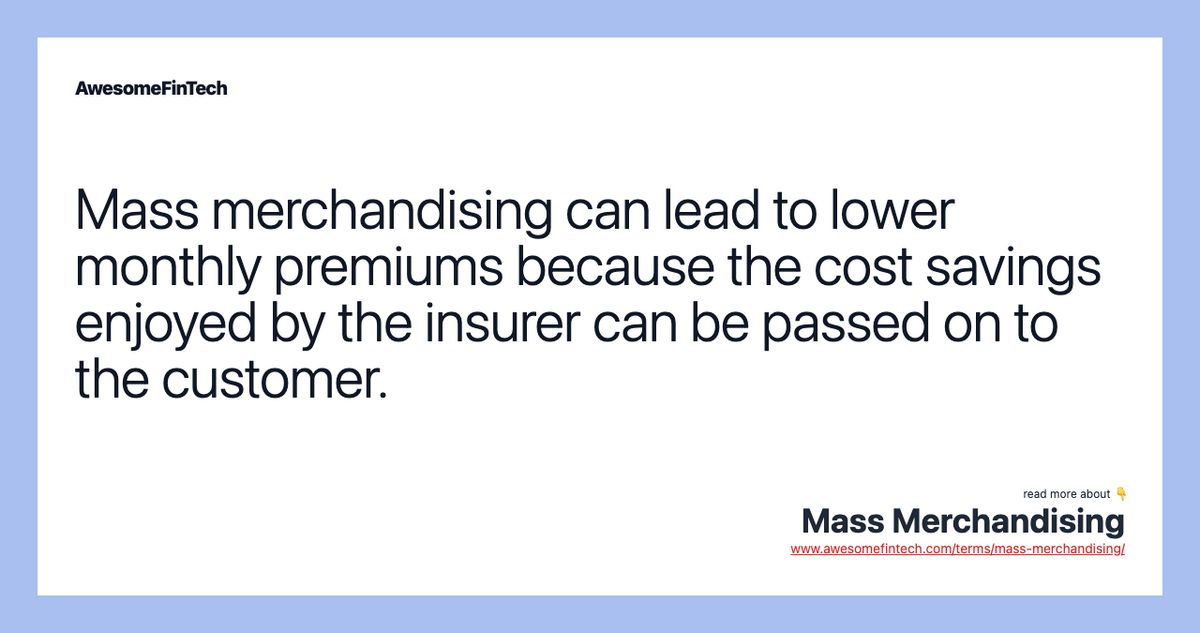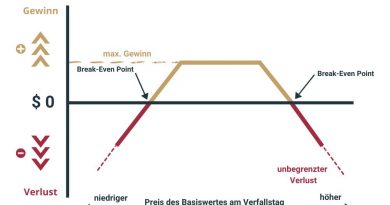Mass Merchandising What It is How It Works

Contents
Mass Merchandising: What It is, How It Works
What Is Mass Merchandising?
In the insurance industry, mass merchandising is a method for selling insurance in which an employer, association, or organization assists in the sale of insurance policies to its members or employees. For example, a teacher’s union that markets a particular insurance product to its members would be participating in a mass merchandising campaign.
Mass merchandising is commonly used in the sale of property and casualty insurance, as well as auto insurance.
Key Takeaways
- Mass merchandising is an approach to selling insurance.
- It involves the insurance company partnering with an organization to market the insurance product to their members.
- Mass merchandising can lead to lower monthly premiums because the cost savings enjoyed by the insurer can be passed on to the customer.
How Mass Merchandising Works
From the perspective of insurance companies, mass merchandising is an effective way of marketing insurance policies to a large group of customers at a low cost. Selling policies through a trust intermediary—such as a large employer or professional association—provides access to potential customers at a relatively low cost. By contrast, marketing directly to those customers could involve considerable expenses and a more lengthy sales process. Mass merchandising is conceptually similar to mass production, as the insurer uses a single approach to obtain new clients instead of a customized approach for each customer.
Mass merchandising can reduce the cost of monthly premiums for the end customer. Many insurers who rely on mass merchandising pass on their own cost savings to customers. In some cases, monthly premiums under a mass merchandising scheme may be as much as 10% to 15% lower than they would be otherwise. Customers who purchase insurance through their employer can pay their premiums through regular payroll deductions. However, insurance sold through mass merchandising is not directly subsidized by the employer.
Mass merchandising has drawbacks. There is no guarantee that an individual will qualify for the coverage offered under a mass merchandising program. Each member of a particular organization would still need to meet the minimum underwriting requirements of the insurer in order to qualify. Another potential drawback is that mass merchandising tends to be used by less well-known insurers who might struggle to attract brand recognition. Potential customers should independently assess the credibility of the insurer involved in mass merchandising before deciding to participate in any program.
Real World Example of Mass Merchandising
Emma, an employee for a large corporation, is informed of a new program being offered by the company in which all employees are welcome to participate in a company-wide insurance plan. The plan provides property and casualty insurance at monthly rates below those available from competing insurers.
Although Emma finds the rates attractive, she seeks out further information about the program. She learns that the insurance company offering the coverage is collaborating with her employer. The insurer can easily reach all of the company’s employees, reducing their marketing budget and passing on savings in the form of lower premiums. The assistance of the employer helps the insurer overcome the fact that their brand is relatively unknown, making it unlikely for Emma and other employees to have found their offering otherwise.
Emma learns that this approach, known as “mass merchandising,” is a common approach to selling insurance. She also learns that, although all employees are eligible to apply for the program, there is no guarantee that any individual employee will be approved.



